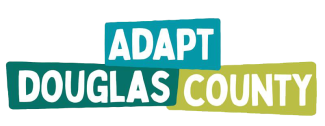Sustainability
Climate Action and Adaptation Plan

Adapt Douglas County is our community’s plan for climate action and adaptation. It was developed to reflect local priorities, recognize our strengths and vulnerabilities, and guide both immediate and long-term strategies in response to a changing climate.
To explore how the plan came together — including the cross-county engagement process, background resources, and all 14 guiding goals for climate mitigation and resilience — visit the project StoryMap.
The goals and strategies in Adapt Douglas County are organized into four key sections — each representing a vital, interconnected system we all rely on and shape through our daily lives. These focus areas include:
Taking Action Across Douglas County
Carrying out the goals of Adapt Douglas County (ADC) is an ongoing and evolving process, reaching across departments, municipalities, and organizations. This page will continue to grow with updates on implementation progress and the contributions of local partners.
In the meantime, here are the current priority work areas within specific ADC goal areas for Douglas County in 2025. Not every goal is represented here; to see all of the goals, visit the project StoryMap.
GOAL 1: Reduce energy consumption while increasing access to renewable sources
Energy powers where we live, work, and play — with commercial and residential buildings combined, it represents the largest source of our emissions. This section highlights how Douglas County is working to reduce energy use, expand access to renewable sources, and support a more reliable, affordable, and resilient energy future for all.
G1-S1: Develop and promote programs that prioritize energy conservation and cost savings
G1-S1.1: Establish a community energy hub that includes tools and resources for reducing energy use and understanding energy options.
The Douglas County Energy Hub was launched to connect residents, businesses, and nonprofits with tools and resources for reducing energy use and exploring energy options. Check out the Douglas County Energy Hub.
G1-S1.3: Co-create energy programming with existing housing and utility affordability programs to further benefit those they serve.
In fall 2024, the County partnered with housing nonprofits and research institutions to develop an extensive proposal focused on improving air quality, energy efficiency, and renewable energy access in low-income housing. While the initial grant opportunity was canceled, the concept laid strong groundwork for future collaboration. Douglas County continues to actively monitor and participate in opportunities to advance accessible energy efficiency and renewable energy with housing partners. Reducing energy burden and improving indoor health and comfort also connects with Goal 9, which addresses health risks.
G1-S3: Increase renewable energy and energy efficiency in local government and institutional facilities
G1-S3.2: Conduct renewable energy analysis for local government infrastructure, identifying potential emissions-reduction impact and funding needs for facility installation.
The County is incorporating solar into the design of the new Judicial and Law Enforcement Center (JLE) and Public Services Building (PSB), with anticipated long-term energy and carbon savings.
G1-S3.3: Identify and plan for ongoing energy efficiency improvements in local government facilities.
Douglas County is conducting energy assessments in county-owned facilities to guide a broader upgrade plan. A recent lighting retrofit is expected to reduce energy use and cut lighting-related costs by 30%.
GOAL 3: Enable low-carbon transportation while improving access to everyday needs
Transportation is the second highest contributor to greenhouse gas emissions in Douglas County after building energy use. By supporting electric vehicles, biking, walking, transit, and better-connected neighborhoods, we can reduce vehicle dependence while improving safety, access, and quality of life.
G3-S3: Enable the transition to electric vehicles (EVs) and electric bicycles (e-bikes)
G3-S3.1: Conduct EV readiness planning for countywide charging infrastructure.*
The Lawrence-Douglas County Metropolitan Planning Organization (MPO) is developing an EV infrastructure playbook to guide the installation of public charging stations. This plan will help partners prepare for funding opportunities while ensuring equitable and future-ready access to EV and e-bike charging.
GOAL 4: Build resilience in our transportation infrastructure
As climate change brings more intense storms, heat, and flooding, communities have an opportunity to rethink how transportation infrastructure is designed and managed. By incorporating green infrastructure and nature-based solutions—such as native plantings, permeable surfaces, and stormwater-smart landscaping—our roads, bridges, and public spaces can become more resilient, adaptive, and ecologically connected.
G4-S1: Adopt policies and design standards that encourage green infrastructure and nature-based solutions.
G4-S1.4: Select native, diverse, local genotype, non-varietal, prairie and tree species for stormwater and other public infrastructure.
Douglas County’s Facilities, Heritage Conservation, and Sustainability teams are collaborating to incorporate native Kansas plants into the re-landscaping of the historic courthouse grounds, blending ecological function with cultural preservation. Pilot projects such as this one are a first step toward integrating standards across facilities.
GOAL 5: Protect diverse ecosystems and their role in natural resilience
Douglas County’s natural systems — from floodplains and wetlands to prairies and woodlands — are key to climate resilience. These efforts focus on protecting ecosystem services, supporting biodiversity, and ensuring land use decisions are aligned with long-term environmental health.
G5-S3: Activate priority projects in the Douglas County Open Space Plan to collaboratively conserve diverse landscapes for future human and non-human communities.
In order to balance the diversity of conservation values, including protecting floodplain and wetland landscapes, within the Wakarusa River Valley with the development needs of our growing community, a team of partners is conducting spatial analysis and community visioning for holistic and proactive planning along the river corridor. This complex planning process will also lead to progress on strategies G5-S2.3 (restore and sustain wetlands) and G6-S2 (prioritize conservation of floodplain). Read more about the Wakarusa Vision Plan.*
GOAL 6: Protect quality, capacity, and functionality of vital water resources and landscapes
Our floodplains, watersheds, and water resources are under increasing pressure, while at the same time becoming more integral amid a changing climate. Douglas County is investing in proactive planning, policy strategies, and conservation efforts to safeguard water quality, prevent flooding, and support long-term water security.
G6-S2: Prioritize creative long-term conservation of floodplains through policy and strategic community partnerships.
Thanks to efforts led by the Kansas Department of Agriculture (KDA) and the Federal Emergency Management Agency (FEMA) in 2024 to inform flood mitigation, the County received a watershed study of Washington Creek. The study provided analysis of flood projections under current and potential development scenarios, including the factors of future rainfall and potential mitigation actions. Read more about the Washington Creek study. The County is now replicating this process on the Wakarusa River. Findings of the latter study will influence the Wakarusa Vision Plan, and both studies will be critical tools to progressing strategies G6-S2.1 (update flood protection codes) and others.
GOAL 7: Protect and build the potential of carbon-sequestering ecosystems
Our lands — from woodlands and wetlands to prairies and agricultural fields — play a vital role in capturing carbon and supporting resilience. This goal focuses on protecting and enhancing landscapes that naturally sequester carbon, while exploring innovative land uses that balance ecological health, community needs, and climate-smart opportunities.
G7-S1.2: Maintain solar and wind regulations that protect public health and safety, environmentally sensitive lands, and other natural and cultural assets.
In April 2022, the Douglas County Board of County Commissioners (BoCC) approved the county’s first Utility Scale Solar Energy Conversion System regulations (12-306-49). Two years later, in May 2024, the BoCC approved an update to the County’s existing Wind Energy Conversion Systems regulations (12-306-44). Both are incorporated into the Douglas County Code, ensuring that forthcoming energy projects of this kind carefully balance the protection of ecosystems and cultural sites, and personal property and public health, with the production of clean energy.
G7-S1.3: Support partnerships to research and pilot varied forms and scales of agrivoltaic production.
In May 2024, the Douglas County BoCC adopted Resolution 24-14, thereby approving a Conditional Use Permit for the siting of a 159-megawatt, 1,105-acre solar energy facility in northern Douglas County. The facility will incorporate pollinator plants and grazing into its vegetation management strategies and is proposed to include additional acres and research opportunities for diverse agricultural production, also known as agrivoltaics. Though the facility’s construction is pending, it will offer the opportunity for the County, producers, utilities, and other partners to learn from and enhance the diversity of our vital landscapes to meet multiple community needs, from energy and food to biodiversity and soil health.
GOAL 8: Support a thriving, sustainable agricultural sector
A resilient future for Douglas County depends in part on the success of local agriculture. This goal supports practices that regenerate soil, sequester carbon, and strengthen the local food economy, opening doors for new farmers and agritourism opportunities.
G8-S1. Promote climate-smart and sustainable agriculture practices, farming entrepreneurs, and agritourism businesses.
Douglas County is actively seeking opportunities to progress this strategy. If you or someone you know is working in this area, we’d like to hear from you, email us at climateaction@dgcoks.gov.
G8-S1.3: Develop or expand training programs, apprenticeship opportunities, and innovative land access partnerships that support aspiring farmers and farm entrepreneurs.
Through the Common Ground Farm, Douglas County facilitates access to public land for agricultural entrepreneurs and cultural practitioners. In 2023, the program expanded participation pathways by adding a seasonal apprenticeship opportunity that provides hands-on learning and mentorship for new and aspiring farmers. The mission and impact of the site continues to take shape while aiming to promote workforce development, sustainable practices, and cultural learning and appreciation.
GOAL 9: Prepare our community to address increased and compounded health risks due to a changing climate
Climate change is already affecting our physical and mental health — from rising asthma rates and heat-related illness to anxiety and disrupted access to care. This goal centers health equity and resilience in community planning, while also supporting upstream solutions that reduce long-term pressure on human services.
G9-S1.1: Conduct and maintain an Environmental Health Risk Assessment in collaboration with Lawrence-Douglas County Public Health (LDCPH), prioritizing locally relevant climate-related public health indicators.*
LDCPH and Douglas County departments of Emergency Management and Sustainability are participating in a Climate Risk and Vulnerability Assessment peer learning cohort, connecting climate exposure to health outcomes. This is a first step toward an Environmental Health Risk Assessment.
G9-S1.2: Prioritize climate change as a consideration when updating the Community Health Plan.
As part of the 2024–2029 Community Health Improvement Plan (CHIP), LDCPH incorporated Goal 3 from Adapt Douglas County — “Enable low-carbon modes of transportation while improving access to everyday needs” — demonstrating a commitment to prioritizing climate change as a public health consideration.
G9-S1.3: Continue to support systemic change that reduces the community’s need for human services.
Douglas County continues to make meaningful progress through the implementation of A Place for Everyone, a strategic plan aimed at reducing and preventing homelessness. This multi-agency effort focuses on systemic, coordinated solutions — including expanding access to affordable housing, strengthening supportive services, and addressing root causes of housing insecurity. The plan’s focus on collaboration, equity, and long-term systems change complements the goals of Adapt Douglas County by reducing vulnerabilities and directly supporting community resilience in the face of climate impacts. In addition, ongoing efforts toward G1-S1.3 (co-create energy affordability programming) will enhance A Place for Everyone’s implementation by reducing the energy burden among housing options.
GOAL 11: Increase community preparedness for climate hazards
Preparing for climate hazards — like flooding, extreme heat, and severe storms — protects lives and strengthens community connections. These strategies focus on risk assessments, neighborhood resilience, and inclusive emergency planning.
G11-S1: Conduct a countywide climate risk and vulnerability assessment that evaluates hazards, exposure, adaptation opportunities, and susceptible and disproportionately impacted groups.*
Lawrence-Douglas County Public Health, Douglas County Sustainability, and Douglas County Emergency Management are participating in a Climate Risk and Vulnerability Assessment peer learning cohort, connecting climate vulnerability to potential local and regional hazards. Completion of a local assessment will help define key vulnerability factors and guide targeted interventions to improve public resilience.
GOAL 13: Systemically prevent, reduce, and responsibly divert solid waste
Solid waste contributes to emissions and can strain finite resources if diversion opportunities are not available. Douglas County is updating its solid waste management plan to focus on reduction, diversion, education, and new opportunities.
G13-S1: Comprehensively update the Douglas County Solid Waste Management Plan with attention to emissions-reducing prevention and diversion opportunities.*
As of summer 2025, Douglas County is undergoing a year-long effort to update the waste management plan, a requirement of the Kansas Department of Health & Environment (KDHE). It will incorporate data from a solid waste operations plan the City of Lawrence has underway.
Note on Initial Implementation Priorities
*Five of the Plan’s six near-term strategies from the Implementation Chapter are starred above. The sixth — “Apply for regional Climate Pollution Reduction Grant (CPRG) funding” — is not currently moving forward as the anticipated funding was not awarded in Kansas.



